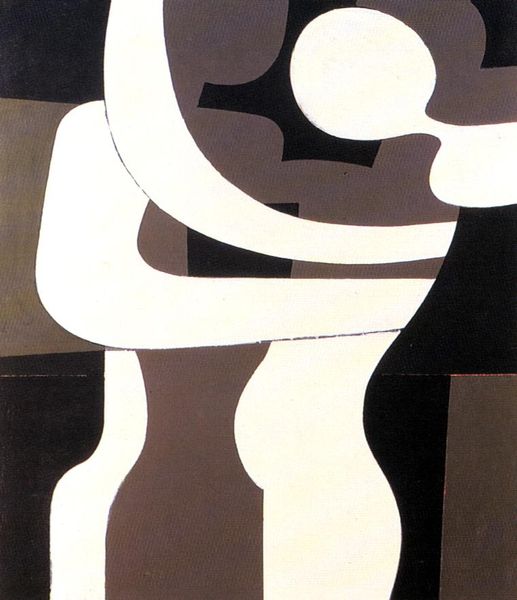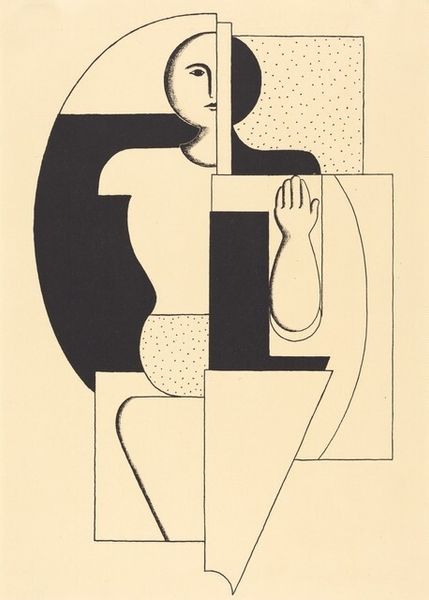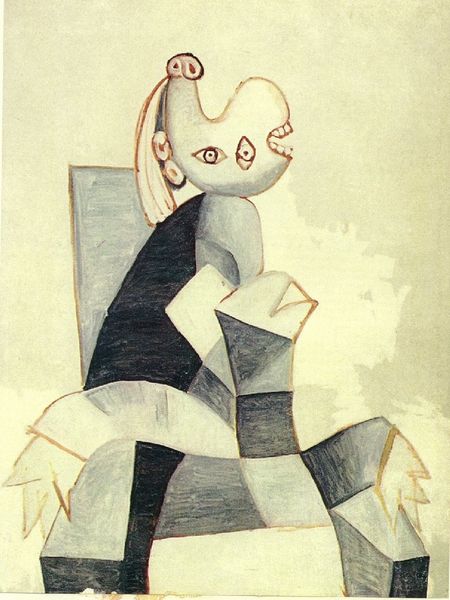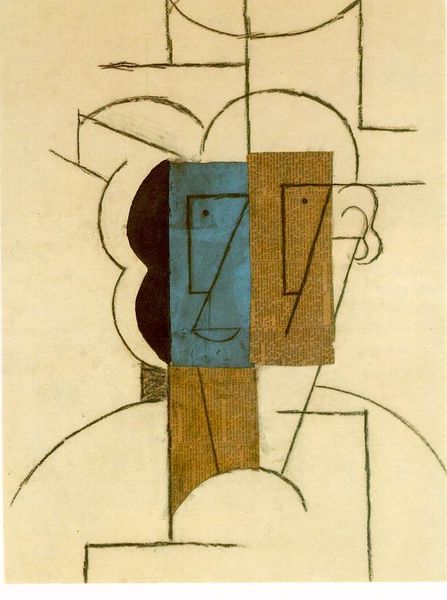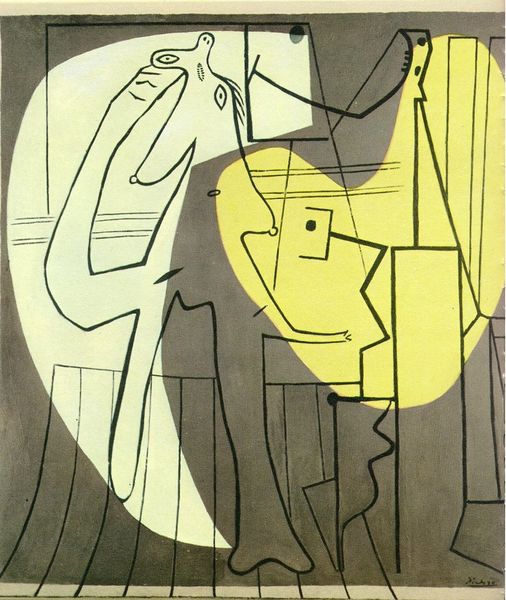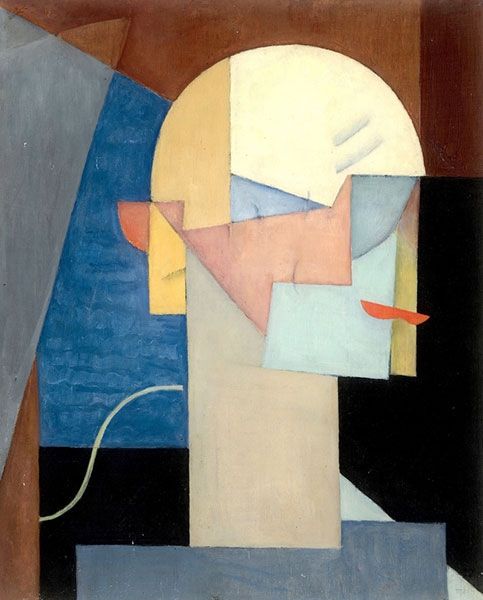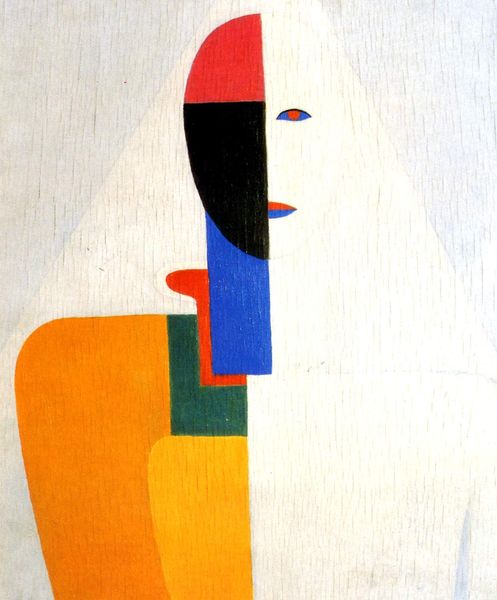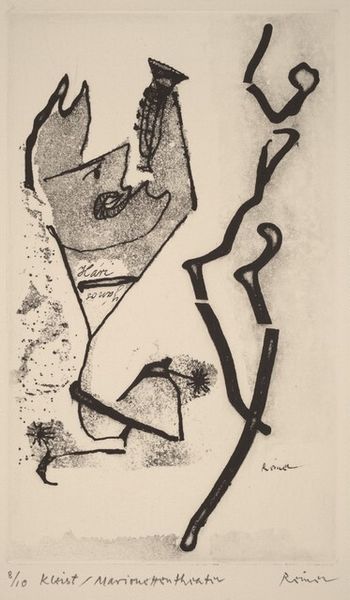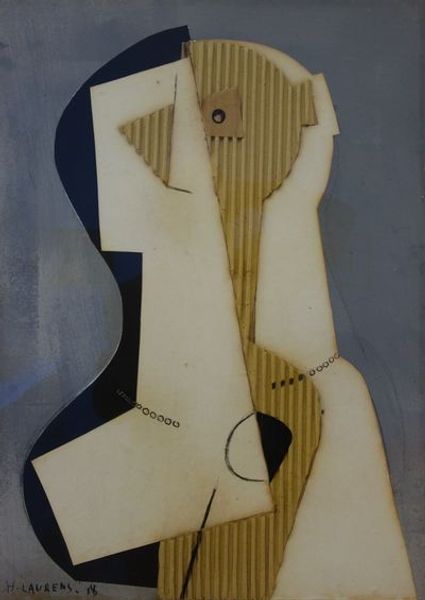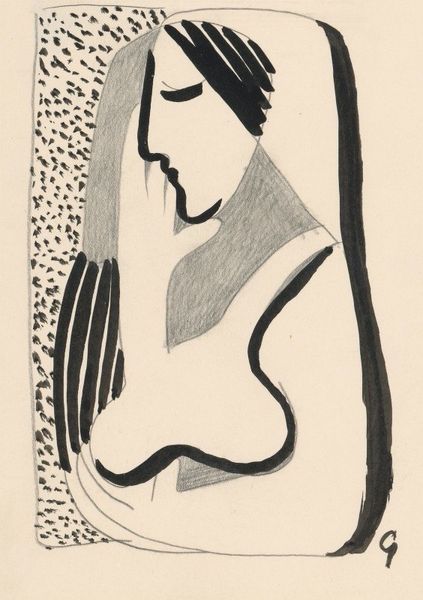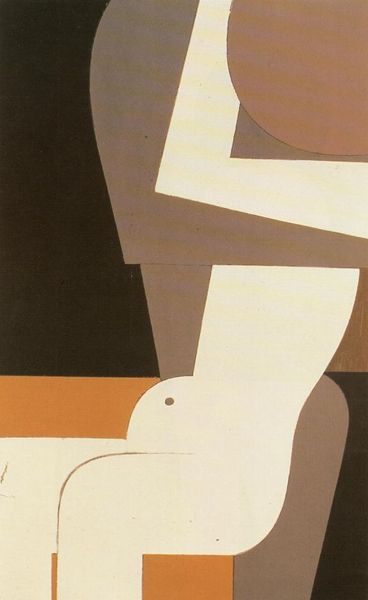
drawing, ink
#
drawing
#
cubism
#
form
#
ink
#
abstraction
#
line
Copyright: Pablo Picasso,Fair Use
Editor: This is Picasso's "Head of a Woman" from 1930, an ink drawing. The stark lines against the dark background create a rather somber mood for me. What do you see in this piece, especially in terms of how it was made? Curator: Well, let's consider the context. Picasso, already a titan, continues his exploration of form, here with ink on paper. The medium itself is key: ink, cheap, easily accessible, reproducible. It democratizes the image, allowing for dissemination beyond the elite circles of oil painting. Editor: That’s an interesting point about the material and its impact. But doesn’t cubism inherently break down forms, no matter the medium? Curator: Yes, but the ink amplifies it. There is no rich texture here. Only pure, unadorned line articulating shape. It highlights the artist's process: the *doing*, not the finished object. Look at how the planes are defined; are they privileging any specific viewpoint, any single 'truth' of the head? Editor: Not really. It feels more like he's diagramming a head, almost like a technical drawing. Curator: Precisely. Think about the labour involved, the social act of drafting as opposed to the preciousness often ascribed to painting at the time. He’s forcing us to acknowledge the construction of the image. Editor: I never thought about the class implications of ink versus oil, but it changes my perception of the piece. Curator: Indeed. Considering materials helps us challenge traditional notions of value and unpack how art operates within society. It goes beyond merely seeing – it asks how we've been taught *to* see, and who benefits.
Comments
No comments
Be the first to comment and join the conversation on the ultimate creative platform.
